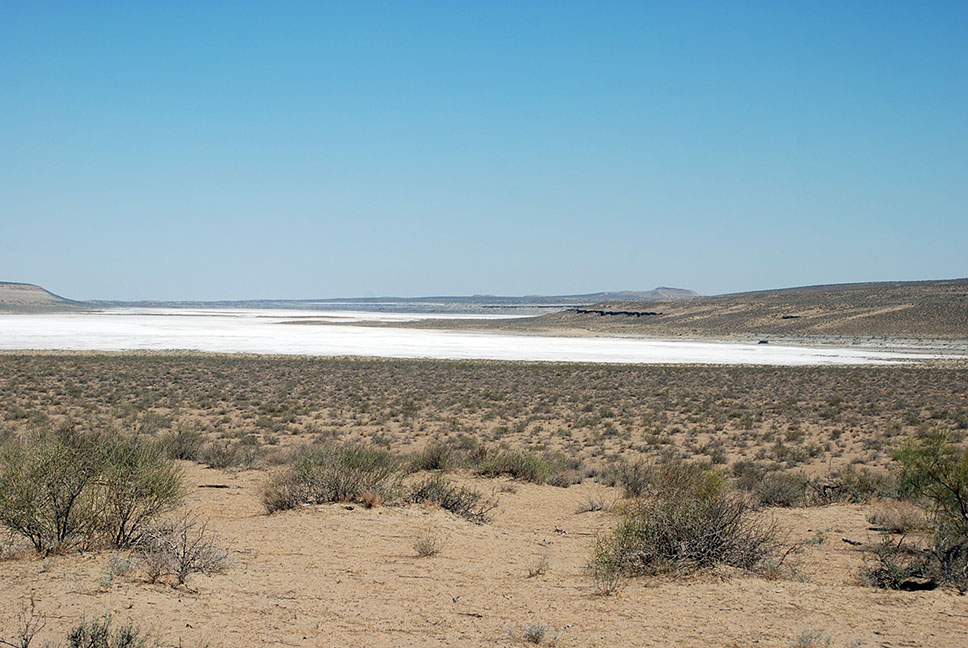The fauna of the Karakum Desert
The Karakums is very specific area.Distinguished by high assimilation to the desert conditions, protective coloring of animals, rather poor species composition compared to other zones, and prevailing nocturnal animals.
The very important factor for animals is the desert climate, in particular the long hot period of a year, a short, usually cold winter and availability of fodder in all seasons of a year (but not equally in all seasons).
The fauna of the Central deserts is typical of the Turan Depression, and it has many common species with Middle Asia, north and Central Africa. The quantity and composition of species in different parts of the desert depend on difference of natural environment.
Very specific is the fauna of river valleys where apart from the desert species you can find animals peculiar of dense tugai thickets and water bodies. There is also the fauna of oasis and settlements. Thus, the Amu Darya valley numbers - 211 bird species, while the Western Karakums – 118 species. The river valleys are the habitat for over hundreds of nestling birds, the desert 20 - 30 species.
The animal world has two main complexes: fauna of sandy areas and fauna of areas with compact soils – clays and crushed stone. The animal world of sandy shrub deserts is most rich. The takyrs and solonchaks are nearly lifeless.
The most typical mammals found here are:
- Roofed – gazelle
- Predatory – corsac fox, wolf, dune cat (endemic), steppe cat, caracal
- Rodents – midday gerbil, Libyna jird, thin-Toed ground squirrel (in sandy areas), yellow gopher (in clay deserts), numerous jerboa - smaller, hairy-footed, comb-toed (endemic) and other
- Insectivorous – sand shrew and long-eared hedgehog; bats are distributed sporadically
The reptile population is rich and quite specific:
- Steppe tortoise
- Snakes – carpet viper (poisonous) arrow snake, sand boa and others
- Lizards – toad agama (long eared, sand, takyr)
Among the insects, the most extensively represented are the coleopterous (darkling beetle, leaf-horned and others), flies, ants, termites (several species). Quite frequently met are solifugae and scorpions. The fauna of ticks is quite diverse.
The zoogeographical list in Turkmenistan:
Mammals:
- Hoofed mammals;Koulan (Persian onager)
- Cloven-hoofed mammals:
- Wild boar
- Tugai deer
- Goitered gazelle (Black – tailed gazelle)
- Bezoar ibex (Persian ibex)
- Markhoor
- Argali
Predators:
- Wolf
- Jackal
- Corsac fox
- Striped hyena
- Dune cat (sand cat)
- Caracal lynx
- Leopard
Rodents (gnawing animals):
- Desert hare
- Long-clawed ground squirrel (gopher)
- Porcupine
- Nutria
- Hairy-footed jerboa
- Giant day jird
- Muskrat
Insect eating mammals;desert hedgehog
Reptiles:
- Fresh water turtle
- Steppe tortoise
- Desert monitor
- Steppe agama
- Big-eared toad agama
- Sand boa
- Arrow snake (psammophis lincolatus)
- Cobra
- Lebetina viper
- Carpet viper
- Transcaspian saw-scaled viper
Birds:
- See-see partridge
- Chukar
- Francolin
- Caspian snowcock
- Pheasant
- Houbara
- Dikkop
- Courser (Cursorius)
- Black-bellied sand grouse
- Pi-tailed sand grouse (Pintail)
- Saxaul desert jay
- Wild duck (mallard duck)
- Eurasian gree-winged teal
- Greylag goose
- Flamingo
- Spoonbill
- Dalmatian pelican
- The great cormorant
- Eurasian coot
Fish:
- Amudarya shovelnose
- Grass carp
- Silver carp
- European carp
- Fresh water catfish, wels
- Sprat
- Grey mullet
- Sturgeon
- Stellate sturgeon
Insects:
- Seven-spot ladybird
- Sand Owlet moths (noctuid moths)
- Mantis
- The hairy-footed flower bee
- Hawk moths
- Common yellow swallowtail
- Buprestid beetles (Poplar buprestid)
- Lyreman. Tibicen linnei (Cicadidae. Cicada)
- Antlions – antlion lacewings, doodlebugs (Myrmeleontidae)
- Polyphylla fullo – Beetle (Melolonthinae)
- Assassin flies (Asilidae, the robber fly family)
- Sand wasps (Sphecidae)
- Locusts
- Blister beetles (Meloidae)
- Anthia mannerheimi Ground beetle (Anthiinae)
- Scarites – Ground beetle
- Calosoma sycophanta – forest caterpillar hunter (Carabidae)
- Acrida – nosed grasshopper (Acrididae)
- Polyphaga pellucida – sand cockroach
- Caspian darkling beetle (Tenebrionidae)
- Scarab – dung beetles (Scarabaeidae)
- Opatrum sabulosum (Tenebrionidae)
